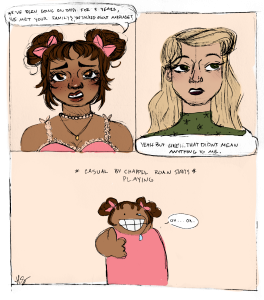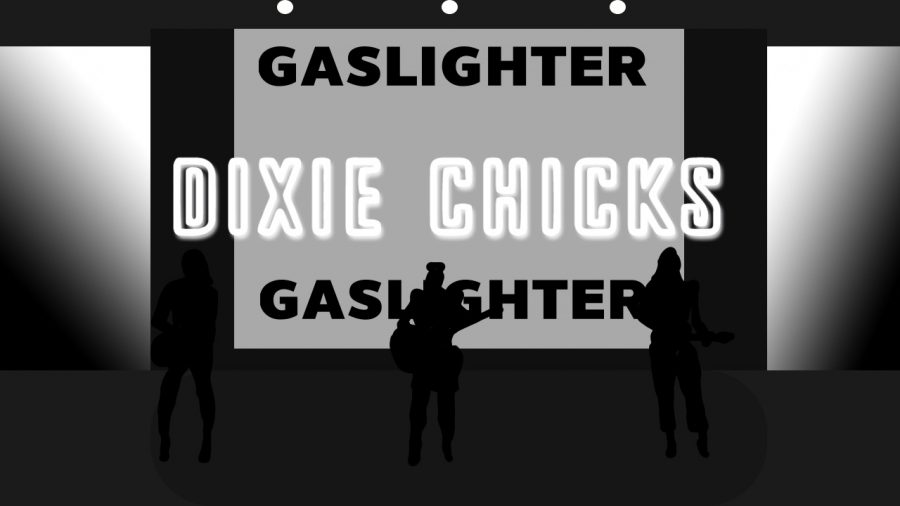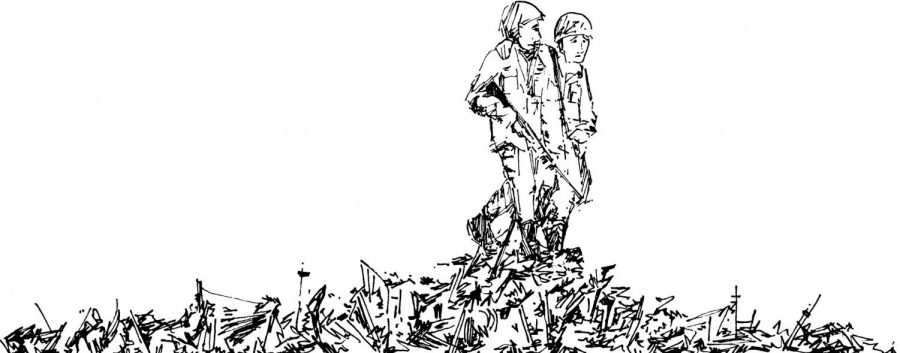 “Almost Silent”
“Almost Silent”
Jason
Fantagraphics Books 2010
Hardcover, 302 Pages
“Almost Silent,” released last month from Fantagraphics Books in Seattle, is certainly silent with almost no dialogue, but Jason captures an impressive reality that is not hidden or hindered by unnecessary words undermining the importance of action. Jason, or John Arne Sæterøy, is a Norwegian cartoonist whose works have received praise across Europe and America. This collection contains four of Jason’s currently out-of-print novels from the last decade. I am in no way an expert on comics, but it is my assumption that not everyone is, so I put this to those who do not already know but are itching to get started: Jason is a good place to begin.
Starting off the collection is “Meow, Baby” (2006), a series of short, one or two page strips that usually end with a satisfying joke and always contain some element of popular culture to get the gag rolling. The plight of a vampire, a mummy with an erection, Elvis and Jesus all appear and reappear throughout these strips, taking not only elements of familiarity from television and literature, but also re-working the often stereotypical (but always fascinating) elements of classic comic suspense. “Meow, Baby” is a thorough introduction to the anthropomorphic characters that Jason uses: tall, thin and usually dogs or birds that differ only slightly in snout or beak.
“Tell Me Something” from 2004 features a tragic romance broken apart by family, class and circumstance. It is mainly a love story, but like any good love story is also composed of deception, suspense and murder. A pickpocket happens across a photograph of his lost love and is thrown into a memory set apart from present day by black pages. Our sympathetic pickpocket finds his love in an abusive relationship and addicted to cocaine, and proceeds through a number of thrilling obstacles to keep her close. The only dialogue inhabits entire panels as silent-movie-style interruptions that resonate between the simple portraits of speaker and recipient.
A horror-love-story of sorts, “You Can’t Get There From Here” (2004) focuses on Frankenstein’s sexually-frustrated monster and the miserable love triangle that forms when Frankenstein himself, falls for his monster’s new undead love. Also featured is a side story on the banality of being the assistant to a mad scientist, though the job’s predictability is quickly eradicated.
And finally, zombies make their glorious appearance in “The Living and the Dead” (2007). A chance meeting between a dishwasher and a prostitute sparks a connection that must unfortunately develop in the midst of an impending zombie takeover. My favorite of the collection, the zombies are easily distinguishable by eyes alone and despite their undeniable hunger for organs they take a backseat to the primary story of man and woman, struggling to survive and maybe kiss somewhere along the way.
Jason’s characters are simply drawn and almost completely mute within their respective panels. The consistency of the frames within the story: always straight-edged squares: shows an unbelievable control over the characters and events passing from box to box. Jason spoke about his style: “It’s a more minimalistic style, where it’s almost right on the edge of being boring. There can be poetry in those kinds of images.”
A deadpan humor prevails over each and every story, whether touching or thrilling, including each short strip in “Meow, Baby.” Jason is accessible for any comic beginners and an example of remarkable discipline and pacing for even the most well-read. Despite the simplicity of each page and within each individual character’s appearance, there is a surprising amount that is said with their eyes; eyes that are, in the most pressing times simple Xs, but primarily empty ovals, black or white, and seem more of an absence than a presence of vision. These eyes, in their complete emptiness, get at that deadpan humor while somehow still seeming to truly convey emotion and intention.
The beauty of comics, and especially “Almost Silent,” is all that is left unsaid both between and within panels. Jason cites Hemingway as one of those minimalist authors of influence for his own work. Perhaps the story lines are not groundbreaking, but they are often hilarious and always sincere; Jason does without words what many writers try to accomplish with thousands.








